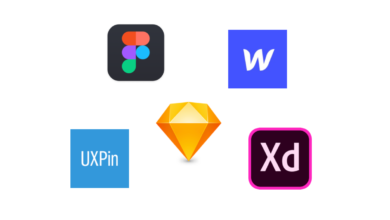The Rise of Low-Code Development: A Game-Changer for Mobile Apps

In today’s era of technology, as more and more businesses are going online, it is important that they have apps and websites to their name. This is why custom web development has gained huge popularity and more and more businesses are investing in it. However, a major drawback is that development can be quite expensive and time-consuming. So, what do businesses without the budget and time do? Well, this is where low-code development comes in and is a great alternative for businesses that cannot hire a proficient development team. Excited to learn more about low-code development and how it can help your business reach the next level of success? Jump right into the following article and learn more about the game-changing approach to mobile and web application development!
Read More: What Are The Top Mobile App Development Frameworks To Consider In 2024?
What is low-code development all about?
As is evident from the name, low-code development refers to the quick creation of apps with minimal coding. According to a study, the global market for low-code development is projected to reach a valuation of USD 65 billion and USD 187 billion by 2027 and 2030 respectively. It also suggests that over 70% of new applications will be built with the help of low-code or no-code platforms.
How do these low-code development platforms work?
If you are looking to explore low-code platforms to get an idea about the concept, we recommend checking out platforms like Appian and Grow. These applications allow users to simply drag and drop different pre-built elements like forms, workflows, and charts to create functional and error-free applications.
Curious about how these low-code development platforms work and make application development so easy? Well, these platforms handle complex coding in the background, allowing users to build applications without essentially coding them by themselves. So, users can quickly develop functional applications without learning how to code. This also means that people with technical proficiency can avoid writing thousands of code lines, which helps speed up the process and eliminate the chance of errors.
Are low-code development platforms really popular?
Owing to the accessibility and convenience offered, low-code platforms are quickly gaining popularity and asserting dominance in the field of application development. As more and more businesses are going digital, some businesses are on a short timeline and must quickly develop and launch their applications. To meet such complex development needs and impossible coding deadlines, low-code development has become a preferred alternative.
What benefits can I enjoy with low-code development?
Low-code development offers numerous benefits which highly contribute to their rising popularity. Some of the benefits of low-code development that convince businesses to use them over custom development are as follows:-
1. Quicker application development
Unlike traditional coding, low-code development platforms allow users to drag-and-drop elements which reduces the total time needed. After all, developing even simple elements from scratch can take up a lot of time. Since the ready-to-use elements offered by these platforms do not need to be configured, developing an MVP only takes weeks instead of months and years.
2. Low development costs
Since low-code development platforms are easy to operate, you are not required to hire a large development team. Moreover, these platforms take away a lot of complex coding, which is why you do not need to invest much in resources. So, low-code development platforms help save on developer costs and resources. If you need a developer to shoulder the development responsibilities, we recommend you hire Android developers from an expert development company.
3. Ease of maintenance
Apps developed using traditional coding methods and tech stacks can be quite difficult to update and maintain. This is because updating means changing the code across the application and modifying existing code configurations. However, low-code development platforms make the process of updating and maintenance quite easier. So, your developers can quickly change the existing application, edit code modules, and maintain the app.
4. Integration and scalability
If you are going ahead with low-code development, it is also wise to use reputable platforms and applications. This is because these platforms have the provision of integrating with existing systems and do so without much hassle. So, developers can easily ensure that these applications are enterprise-grade, scalable, and able to manage thousands of users.
To summarize, low-code development platforms are game-changing and allow developers to quickly tackle mobile and web application development!
Read More: React Native vs Swift: Which is Best for iPhone App development
When should you consider utilizing low-code development platforms?
Some common scenarios where businesses and startups decide opting for low-code development would be a better idea include:-
- Building MVPs or prototypes that implement new application ideas
- Developing simple customer-centric applications like grocer ordering or account management applications
- Creating business applications to control internal functionalities like workflows and reporting
- Helping non-development teams build and create their own applications
- Developing apps quickly while ensuring agility during emergencies or when testing new ideas is necessary
Although low-code development platforms are quite convenient, they might not aid in complex application development. This is because implementing these features might require utilizing advanced device features or integrating specialized APIs. That said, low-code development platforms are a great resource for meeting major basic to intermediate app needs businesses might have.
Are there any popular apps developed with low-code concepts?
Owing to the numerous benefits of low-code development platforms, several businesses across different industries are utilizing these to build and develop their applications. Some common examples that you must check out include:-
- Lowes Foods to enable curbside pickup orders in the retail industry
- AcceleratXR for its patient-education app in the healthcare industry
- Erste Bank’s finance tracking customer-centric app in the banking and financial industry
Should I go for low-code development or no-code development?
The choice between low-code and no-code development has become a pivotal decision for businesses and developers alike as they seek efficient ways to create software solutions. Both approaches aim to streamline the development process and empower individuals with varying technical backgrounds to contribute to application building. However, the decision to go for low-code or no-code depends on several factors, including the complexity of the project, the skill set of the team, and the specific requirements of the business.
Low-code development and no-code development share a common goal: to accelerate the application development lifecycle and reduce the dependency on traditional coding. Low-code platforms provide a middle ground, offering a visual development environment that requires minimal hand-coding but allows for more customization and flexibility than no-code platforms.
Low-code development is well-suited for projects that require a balance between speed and customization. With low-code platforms, developers can leverage visual interfaces, pre-built templates, and drag-and-drop components to expedite the development process. This approach is particularly advantageous for projects with moderate complexity, where some custom coding may be necessary to meet specific requirements.
One of the key advantages of low-code development is its ability to cater to a broader range of applications, including those with more intricate logic and integration needs. Organizations with a skilled development team can use low-code platforms to enhance productivity while maintaining a high degree of control over the application’s architecture and functionality.
On the other hand, no-code development is designed for users with little to no coding experience. It relies heavily on visual interfaces and predefined building blocks to enable users to create applications through a simple, intuitive process. No-code platforms are ideal for projects that involve straightforward workflows and processes, such as form-based applications, simple databases, or basic automation tasks.
No-code development empowers business users, subject matter experts, and citizen developers to actively participate in the application development process. This democratization of development can lead to increased agility within an organization, as individuals from various departments can contribute to creating solutions that meet their specific needs without relying on the IT department.
However, the simplicity of no-code platforms comes with limitations. These platforms may struggle to accommodate more complex requirements or integrations that go beyond the predefined capabilities of the visual development environment. As a result, organizations considering no-code development must carefully assess whether the chosen platform can meet the demands of their project without sacrificing functionality.
Ultimately, the decision between low-code and no-code development depends on the specific goals and requirements of the project, as well as the expertise of the development team. Organizations looking for a balance between speed and customization may find low-code development to be the most suitable option. Conversely, those prioritizing ease of use and empowering non-developers to participate in the development process may opt for a no-code approach.
In conclusion, both low-code and no-code development have their merits, and the choice should be made based on a careful evaluation of the project’s complexity, the available skill set within the team, and the desired level of customization. As technology continues to evolve, these approaches will likely play increasingly important roles in shaping the future of application development.
Read More: Top 10 Healthcare App Development Companies in the USA
Conclusion
Low-code development makes mobile and web development faster, more affordable, and more accessible, which ensures that businesses can quickly develop and deliver applications. If you are on a tight budget and short timeline, we recommend trying out low-code development. You can also partner with an expert mobile app development agency to ensure better and quicker development of customized and feature-rich applications.











